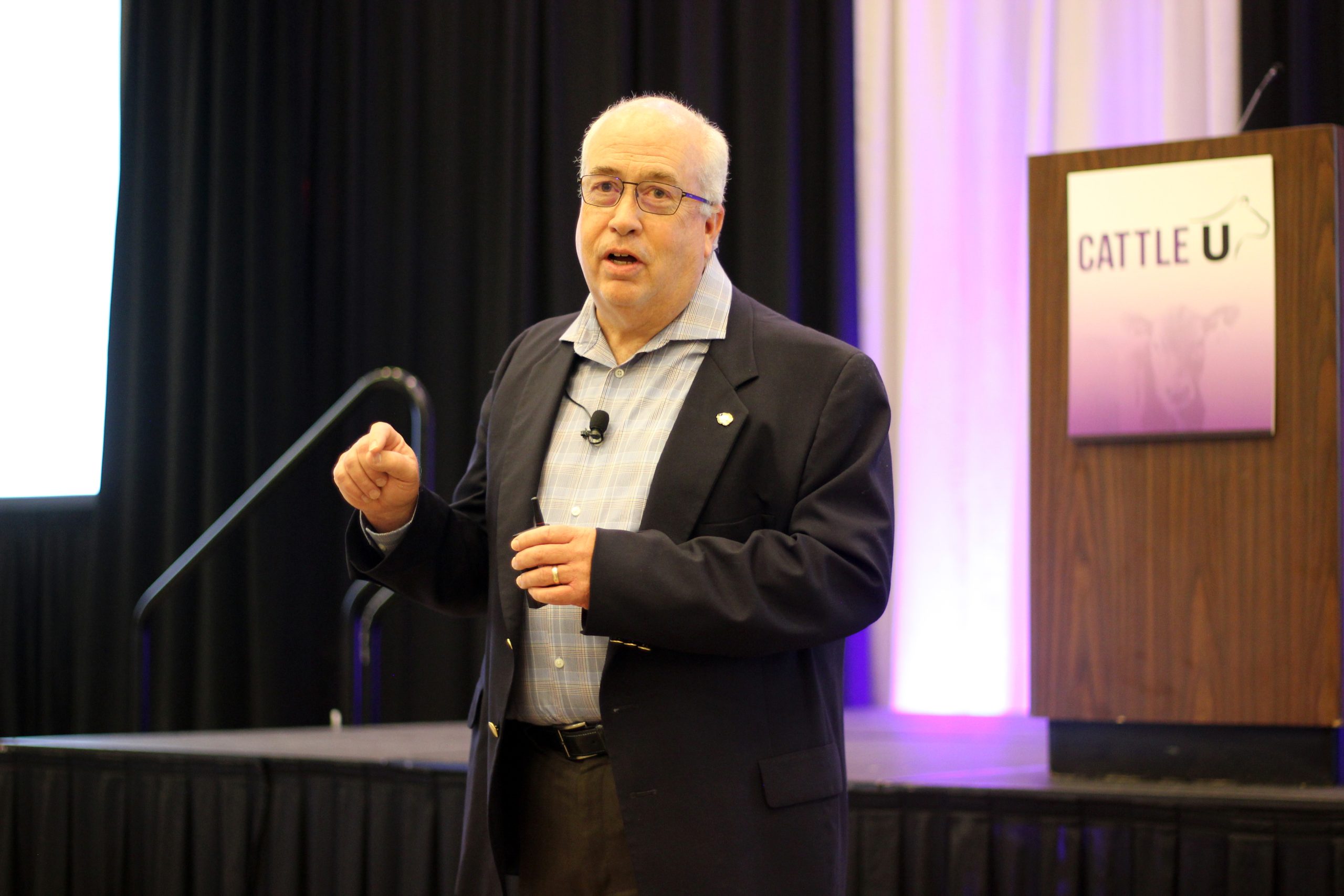Livestock economist gives cattle price and herd rebuilding outlook

Scott Brown, a livestock economist at the University of Missouri, spoke at the recent Cattle U event in Manhattan, Kansas, on the historic low cattle numbers and opportunities within the market for optimal cattle prices.
“2023 is actually the first year beef production has declined since 2015, and it won’t be the last year of the decline,” Brown said.
Although summer rains have lessened drought conditions for much of the High Plains, many areas are still experiencing dry conditions. Brown said a consequence of the drought has been an offset of economic incentive for herd rebuilding.
“I don’t think this rebuilding experience will be like what we came through in 2014 and 2015,” he said. “I don’t expect to see the same quick build up that we saw back then. We had a record profitability in 2014. Even though we might have record cattle prices today, we don’t have record profitability. The cost side of the equation looks a lot different.”
Furthermore, Brown said as good as prices are today, they are expected to go even higher in the future. However, as prices increase, he is concerned it could cause a consumer shift away from beef due to high prices in the grocery store.
“When do they decide that’s too high?” Brown asked. “What’s happened in the past may not be the best predictor of what’s happening going forward.”
Brown said when consumers walk up to the meat case, they look at the price of beef, then check the price of pork, then find the price of chicken. They make their shopping decision based on those relative prices. The question is, if and when will they substitute pork or chicken for beef.
“My concern is at some point there could be a switch, and I think if it’s a switch, it’s a hard switch,” Brown explained. “There’s nothing gradual about consumer behavior. I think we could have very high beef prices and frankly, it’s not going to change consumption very much. But if we all of a sudden see consumers make a big switch, it could be very difficult to get that market back.”
Predicting consumer purchasing trends has become complicated, partly due to COVID-19 and the anomalies created by stimulus checks and lockdowns. In 2020, consumers purchased differently than they probably would have without the stimulus money injected into the economy, so beef continued to be on their shopping lists. Now that the checks have stopped and the economy is still struggling for consumers, Brown wonders what the future will hold if beef prices continue to rise. Although he does not know what to expect as far as consumer response, Brown does have cattle number predictions.
“My estimate of Jan. 1, 2024, is slightly more than 28 million beef cows, that will be below 2014 numbers,” he said. “However, we are so much more productive today than we were in 2014 and 2015. We’re producing a lot more calves out than we did just a few years ago.”
Even if we continue to move out of drought, beef cow numbers will still be low because input costs are still so high.
“I think hay is going to stay fairly tight for us, which means we need higher cattle prices, for the sake of profitability.”
As far as beef cow slaughter, Brown said year to date we are down a little more than 11%. In 2022 there was a remarkable amount of beef cow slaughter, so even though slaughter levels are down, Brown said when he looks at the big picture, slaughter numbers are still above average compared to normal years. Although cattle prices are high and will continue to rise, risk remains. With the high operating costs, inflation and unknown consumer response during recession, cattle producers should be cautiously optimistic for the future, but prepared for more curveballs.
Lacey Vilhauer can be reached at 620-227-1871 or [email protected].
Look for more CattleU coverage at hpj.com/?s=cattleu.



